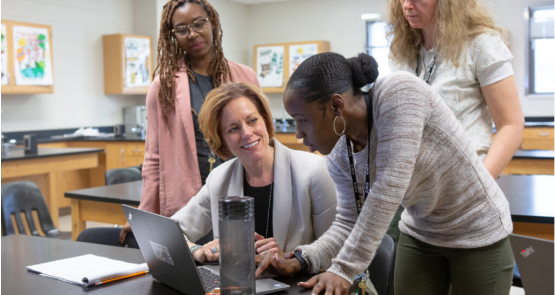What is an example of the ambiguity effect?
These days buying a new home feels more like riding a rollercoaster than making a solid investment for your family and finances. The real estate market is wild and unpredictable and what should feel like a tried and true process and right of passage has become fraught with uncertainty and angst for many people. It comes as no surprise then that these are ripe conditions for a commonplace cognitive bias – the ambiguity effect – to rear its head.
Let’s explore a common scenario: When buying a new home, most people obtain financing through a bank by securing a mortgage. As part of that process, the homebuyer often needs to decide whether to use a conventional loan at a fixed interest rate or an adjustable rate mortgage, where the interest rate fluctuates with the market.
Most people choose the fixed-rate loans even though, historically, adjustable-rate mortgages have proven to be money-savers in the long run. Why do people opt for the more-expensive option?
Many home buyers prefer the certainty of having a fixed monthly payment, even if it’s more expensive. To them, this is “safer” than the uncertainty of payments that will fluctuate, even if that means their payments may go down and save them money over the life of the loan. Because, of course, their payments could also go up, right?
This decision to choose the known over the unknown is an example of “the ambiguity effect.”
Why do we fall for the ambiguity effect?
In a nutshell, this cognitive bias occurs when people choose options that have a known probability of a favorable outcome over choices where a favorable outcome is unknown or is unpredictable.
In business, this might mean a refusal to implement a novel and unproven strategy or practice. In college, you might choose to take a class with an established–but mediocre professor–over an upstart adjunct. In too many instances, people associate unknown or missing information with negative information.
This decision to choose the known over the unknown is an example of “the ambiguity effect.”
It’s human nature to seek the comfort of what is known and familiar. Generally, people try to minimize their exposure to risk or uncertainty, and the ambiguity effect is a great example of that. Fortunately, you don’t have to be held hostage by your own cognitive biases. Humans have the ability to make decisions systematically and analytically by using critical thinking skills which can act as a counterbalance to cognitive biases like the ambiguity effect. These skills can be learned; they only require a commitment to practice them routinely.
So, how do you stop the ambiguity effect?
Ask questions.
Overcoming the ambiguity effect requires stepping back and thinking about how to best clarify what is unclear and how information gaps can be filled. This begins by asking the right questions in order to better understand where our hypothesis might be wrong or misinformed. Doing that creates an opportunity to find more information about the unknown, to educate ourselves about the topic, to ask a different set of questions, or at minimum, acknowledge that more information is needed to make a sound decision. This is a key step in thinking critically.
For example, let’s take a car buyer who is looking at two cars: an expensive new sedan that comes with an extensive warranty from a dealership vs. a considerably cheaper used model off Craigslist. With the ambiguity effect in play, the buyer may opt to buy from the dealer, feeling that it’s the “safer” purchase. After all, if the car breaks down, they would know exactly where to bring it and what the warranty will cover. Given this, the used car looks like a gamble.
Overcoming ambiguity bias in this instance means gathering some of the missing information and questioning the hypothesis that the new car is a “safer” purchase. For example:
- Can the seller of the used car provide maintenance records?
- What do consumer advocacy groups have to say about this particular make and model?
- What are the average repair costs for the used car?
- How much will it cost to insure the new car vs. the used car?
After investigating the answers to these and other questions, the car buyer should map the new information against their initial hypothesis to see where or if their thinking fell short. Perhaps a used car with all of its maintenance records and a good recommendation from Consumer Reports is a better choice.b
Our tendency to be governed by ambiguity bias is largely driven by our desire for safety. Even though something new or different might be better than the status quo there is, of course, no guarantee that things will not go wrong. Even if the “known” isn’t optimal, sticking with it feels safer than doing something different.
Analyze Before Acting.
The most important step in overcoming the ambiguity effect is taking the time to think objectively and rationally – thereby taking the drama out of the decision. In essence, practice thoughtful patience. Quick, rash decisions are susceptible to cognitive biases like the ambiguity effect.
Once aware of how our thinking becomes distorted or trapped by our brain’s natural biases, people can begin to take the steps necessary to mitigate their influence over decision making. Doing this not only helps to avoid mistakes; it can also help people explore opportunities they might have otherwise avoided – ultimately enriching their experiences.
By taking a little extra time to question, investigate and think through an unknown scenario, people can actually de-dramatize the decision-making process and remove the emotion from it. These key steps can put the ambiguity effect in its place – as a cognitive bias that may give someone pause, but one that does not paralyze them or prevent forward momentum.
By Helen Lee Bouygues, President of the Reboot Foundation



